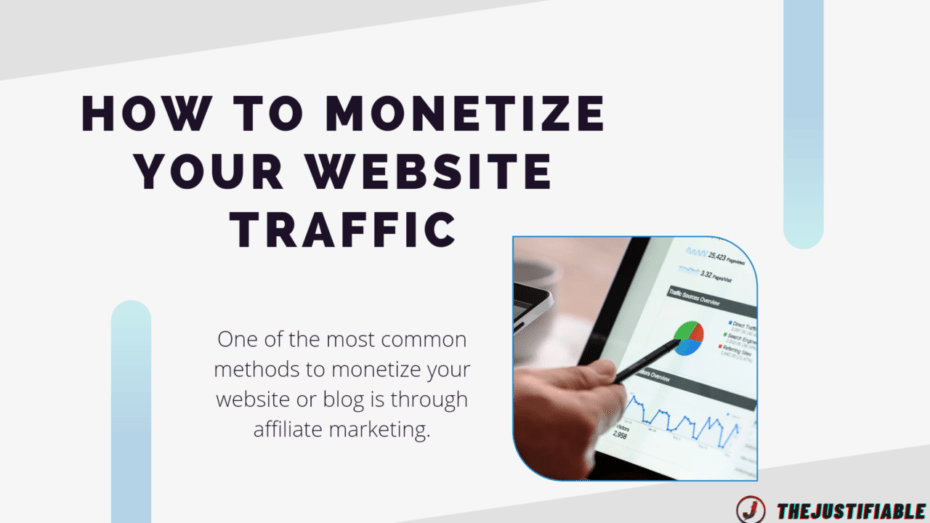Table of Contents
Monetize your website traffic effectively to unlock new revenue streams and maximize your earnings potential. This guide will walk you through various strategies to turn your site visitors into income, providing actionable tips and insights for successful implementation.
1. Optimize Ad Placements for Maximum Revenue
Optimizing ad placements on your website can significantly boost your revenue. It’s crucial to understand that strategic placement and selection of ads can enhance user experience while increasing click-through rates. By analyzing data and implementing best practices, you can turn your website traffic into a lucrative income stream.
To maximize revenue, consider different types of ad placements such as banners, pop-ups, and native ads. Each type has its own benefits and potential drawbacks, so it’s essential to test and refine your strategy. Ensuring that ads are relevant to your audience will also increase engagement and profitability.
Choosing the Right Ad Networks
Selecting the right ad network is vital for monetizing your website traffic. Different ad networks offer various formats, payout structures, and targeting options. Popular choices include Google AdSense, Popads, and Hilltopads, each with unique features and benefits.
Firstly, evaluate the ad network’s compatibility with your website’s niche and audience. Some networks specialize in specific industries, which can lead to higher payouts. Additionally, consider the ease of integration and support provided. Reliable customer support can make a significant difference in optimizing your ad revenue.
Secondly, assess the payout rates and minimum thresholds. Higher-paying networks might have stricter requirements, but they can offer better returns. Look for networks that provide detailed analytics to help you track performance and make informed decisions. Transparency in earnings and performance metrics is crucial for long-term success.
Lastly, experiment with multiple ad networks to find the best fit for your site. Testing different options will give you insights into which networks deliver the highest revenue while maintaining a positive user experience. Over time, you can streamline your approach to focus on the most profitable partnerships.
Balancing Ad Density and User Experience
Finding the right balance between ad density and user experience is crucial for maintaining site engagement. Overloading your site with ads can deter visitors, leading to higher bounce rates and lower revenue. On the other hand, too few ads may limit your earning potential.
Start by placing ads in high-visibility areas without overwhelming the content. Common placements include above the fold, within the content, and in the sidebar. Use tools like heatmaps to understand user behavior and identify optimal ad locations. This data-driven approach ensures that ads are seen without disrupting the user experience.
Next, consider the types of ads you are displaying. Native ads and in-content ads tend to blend seamlessly with the site’s design, providing a less intrusive experience. Avoid aggressive ad formats like pop-ups or auto-play videos, as they can frustrate users and increase the likelihood of ad blockers being used.
Additionally, monitor user feedback and engagement metrics. High bounce rates or a decline in page views can indicate that your ad strategy needs adjustment. Regularly reviewing these metrics allows you to fine-tune ad placements and formats to achieve the best balance.
Finally, prioritize user experience by offering ad-free options or premium memberships. This not only enhances user satisfaction but also provides an alternative revenue stream. By valuing your audience’s experience, you can build a loyal user base while still monetizing effectively.
A/B Testing for Ad Performance
A/B testing is an essential tool for optimizing ad performance and maximizing revenue. It involves comparing two versions of a webpage to see which one performs better in terms of ad engagement and overall user interaction. This method allows you to make data-driven decisions to enhance ad placements and formats.
Begin with clear objectives for your A/B tests. Whether you’re testing ad positions, types, or sizes, define what success looks like. For example, you might aim to increase click-through rates or reduce bounce rates. Having specific goals helps in measuring the effectiveness of each variation.
Next, run the tests with a significant sample size to ensure reliable results. Use tools like Google Optimize or Optimizely to set up and manage your tests. These platforms provide detailed analytics and insights, making it easier to interpret the data. Conduct tests over a sufficient period to account for variations in traffic and user behavior.
Analyze the results to identify the winning variations. Look at key metrics such as click-through rates, revenue per visitor, and overall user engagement. It’s important to understand not just which variation performed better, but why it did. This deeper insight helps in making informed adjustments to your ad strategy.
Implement the winning changes and continue to test regularly. The digital landscape and user preferences evolve, so continuous testing ensures your ad strategy remains effective. Keep refining your approach based on the latest data to maintain optimal performance and revenue growth.
2. Implement Affiliate Marketing Programs
Implementing affiliate marketing programs is a fantastic way to monetize your website traffic. This strategy involves promoting products or services from other companies and earning a commission on any sales generated through your referral links. It’s a win-win situation: you provide valuable recommendations to your audience and earn revenue from successful referrals.
To start, you’ll need to join affiliate programs that align with your website’s niche and audience. Look for programs that offer high-quality products and attractive commission rates. Once you’re set up, focus on creating engaging content that naturally incorporates your affiliate links, making sure your recommendations are genuine and beneficial to your readers.
Selecting Profitable Affiliate Products
I recommend you to be selective when choosing affiliate products to promote. It’s essential to ensure that the products align with your audience’s interests and needs. Start by researching popular products within your niche. Look for items with high demand and positive reviews, as these are more likely to convert.
I advise you to consider the commission structure of each product. Higher commissions can significantly boost your earnings, but it’s also crucial to balance this with the product’s relevance to your audience. Promoting a high-ticket item that doesn’t resonate with your readers might result in fewer conversions, while a lower-priced item that’s highly relevant could generate more sales.
Additionally, think about the credibility of the affiliate program. I believe it’s important to partner with reputable companies that provide reliable tracking and timely payments. Read reviews from other affiliates and ensure the program has a good reputation in the industry.
Finally, test a variety of products to see which ones perform best. I suggest you track the performance of each product and focus on promoting the ones that generate the most revenue. This ongoing evaluation will help you optimize your affiliate marketing strategy over time.
Integrating Affiliate Links Seamlessly
Seamless integration of affiliate links is crucial for maintaining a positive user experience. I recommend you to embed links naturally within your content so they don’t disrupt the flow of information. For instance, you can include links in product reviews, tutorials, and relevant blog posts.
I advise you to use contextual links that fit naturally within the text. This approach makes the links appear as helpful recommendations rather than blatant advertisements. Additionally, consider using call-to-action buttons or banners that attract attention without being intrusive. These elements can effectively guide readers to the affiliate products.
Another tip I would say is to disclose your affiliate relationships transparently. Informing your audience that you may earn a commission from purchases helps build trust and credibility. Most readers appreciate honesty and are more likely to support your recommendations when they know you have their best interests at heart.
Lastly, I suggest you monitor the performance of your affiliate links regularly. Use tools like ClickMagic or affiliate program dashboards to track clicks, conversions, and revenue. Analyzing this data will help you understand which placements and strategies are most effective, allowing you to refine your approach.
Tracking and Analyzing Affiliate Sales
Accurate tracking and analysis of affiliate sales are vital for optimizing your efforts and maximizing earnings. I recommend you to use reliable tracking tools provided by your affiliate programs. These tools often offer detailed reports on clicks, conversions, and revenue, providing valuable insights into your performance.
I advise you to set specific goals for your affiliate marketing efforts. Whether you aim to increase click-through rates, conversion rates, or overall revenue, having clear objectives will help you measure success more effectively. Regularly reviewing your progress against these goals will keep you focused and motivated.
Additionally, I believe it’s beneficial to analyze the performance of individual affiliate links. Identify which links generate the most clicks and conversions, and try to understand why they’re successful. This analysis can reveal patterns and preferences among your audience, guiding you toward more effective strategies.
Finally, I suggest you continuously test and tweak your approach. Experiment with different types of content, link placements, and promotional tactics. Affiliate marketing is dynamic, and staying adaptable will help you stay ahead of the competition and achieve long-term success.
3. Offer Premium Content and Subscriptions
Offering premium content and subscriptions is a powerful way to monetize your website traffic. This approach allows you to provide exclusive, high-value content to your audience in exchange for a recurring fee. It not only generates consistent revenue but also fosters a loyal community of engaged users who are willing to invest in your expertise.
To successfully implement this strategy, you need to focus on creating content that your audience finds irresistible. The premium content should offer something unique and valuable that they can’t get for free. Additionally, setting up a seamless subscription model and effectively promoting your offerings will ensure maximum engagement and conversions.
Creating Valuable Premium Content
Creating valuable premium content is the cornerstone of your subscription strategy. I recommend you to start by understanding your audience’s needs and interests. Conduct surveys, engage with your readers, and analyze your most popular free content to identify topics that resonate with them.
I advise you to focus on quality over quantity. Premium content should be in-depth, well-researched, and professionally produced. This could include comprehensive guides, exclusive interviews, detailed tutorials, or high-quality videos. The goal is to provide content that delivers exceptional value and justifies the subscription cost.
Next, consider offering various content formats to cater to different preferences. I believe that incorporating videos, podcasts, and downloadable resources can enhance the appeal of your premium offerings. Providing diverse formats ensures that subscribers find something that suits their learning style and keeps them engaged.
Lastly, I suggest you to regularly update your premium content. Consistently adding fresh and relevant material will keep subscribers interested and reduce churn rates. Highlighting upcoming content can also create anticipation and encourage renewals, ensuring a steady stream of revenue.
Setting Up a Subscription Model
Setting up a subscription model involves several crucial steps. I recommend you to choose a reliable platform that supports subscription services. Popular options include MemberPress, Profilepress, and Substack, each offering different features and pricing structures to suit your needs.
I advise you to define your subscription tiers clearly. Offering multiple levels of access can cater to various budget ranges and provide additional value for higher-paying subscribers. For example, you could have a basic tier with access to premium articles and a higher tier that includes webinars and one-on-one consultations.
Additionally, I think it’s essential to set a competitive pricing strategy. Research similar services in your niche to understand what your audience is willing to pay. Ensure that the value you provide aligns with the subscription cost, making it a worthwhile investment for your subscribers.
I would say it’s important to make the signup process as seamless as possible. A user-friendly interface and straightforward payment options can significantly improve conversion rates. Providing a free trial or money-back guarantee can also reduce barriers to entry and encourage more users to subscribe.
Promoting Premium Offerings
Promoting your premium offerings effectively is key to attracting subscribers. I recommend you to leverage your existing audience through email marketing campaigns. Craft compelling emails that highlight the benefits of your premium content and include persuasive calls-to-action to drive signups.
I advise you to use social media platforms to reach a broader audience. Share snippets or previews of your premium content to entice followers to subscribe. Collaborate with influencers or industry experts to expand your reach and build credibility.
Another powerful strategy, I believe, is to create gated content on your website. Offer valuable articles or resources that require a subscription to access fully. This approach can showcase the quality of your premium content and encourage free users to upgrade for full access.
Lastly, I suggest you to run limited-time promotions or discounts to create urgency. Special offers can prompt hesitant visitors to take action and subscribe. Highlighting subscriber testimonials and success stories can also build trust and demonstrate the tangible benefits of your premium content.
4. Leverage Sponsored Content Opportunities
Leveraging sponsored content opportunities can be a highly effective way to monetize your website traffic. Sponsored content involves partnering with brands to create content that promotes their products or services while aligning with your site’s voice and audience. This strategy not only generates revenue but also provides value to your readers through relevant and engaging content.
To start, you need to find suitable sponsorship deals that resonate with your audience. Crafting compelling sponsored posts is crucial for maintaining credibility and ensuring that the content feels natural and engaging. Transparency with your audience about sponsored content is also vital for building trust and maintaining a loyal readership.
Finding Sponsorship Deals
Finding sponsorship deals that align with your website’s niche is the first step. I recommend you to reach out to brands that match your content and audience. Look for companies whose products or services you genuinely believe in and use. This authenticity will make your sponsored content more compelling and trustworthy.
I advise you to create a media kit that highlights your website’s traffic statistics, audience demographics, and engagement metrics. This professional document can showcase your value to potential sponsors and make your pitch more persuasive. Include examples of past collaborations and their success stories to demonstrate your effectiveness.
Next, leverage networking opportunities at industry events, webinars, and social media platforms. Building relationships with brand representatives can open doors to sponsorship deals. I believe participating in industry-specific forums and groups can also help you connect with potential sponsors.
Finally, consider joining influencer marketing platforms where brands actively seek content creators for partnerships. Platforms like AspireIQ, Influence.co, and TapInfluence can connect you with brands looking for sponsorship opportunities. These platforms simplify the process and provide a streamlined way to find and manage sponsorship deals.
Crafting Compelling Sponsored Posts
Crafting compelling sponsored posts is essential for engaging your audience and satisfying your sponsors. I recommend you to start with a clear understanding of the sponsor’s goals and key messages. Ensure that the content aligns with your site’s tone and style to maintain authenticity.
I advise you to focus on storytelling rather than blatant promotion. Share your personal experiences or customer testimonials related to the sponsored product. This narrative approach can make the content more relatable and engaging for your readers. Highlight the benefits and unique features of the product in a natural and informative way.
Additionally, I think integrating visuals can enhance the appeal of your sponsored posts. High-quality images, videos, and infographics can capture your audience’s attention and convey the sponsor’s message effectively. Visual content can also break up text and make the post more visually appealing.
Lastly, I suggest you to include clear calls-to-action (CTAs) that guide your readers on what to do next. Whether it’s visiting the sponsor’s website, signing up for a free trial, or making a purchase, effective CTAs can drive conversions and provide measurable results for your sponsors.
Ensuring Transparency with Your Audience
Ensuring transparency with your audience about sponsored content is crucial for maintaining trust and credibility. I recommend you to clearly disclose sponsored posts by labeling them as “Sponsored” or “In Partnership With [Brand].” This honesty builds trust and shows your commitment to ethical content practices.
I advise you to provide context on why you chose to partner with a particular brand. Explain how the sponsored product aligns with your values and benefits your audience. This transparency helps readers understand your motivations and can enhance their perception of the sponsored content.
Next, I believe it’s important to maintain your editorial standards. Just because a post is sponsored doesn’t mean it should compromise on quality. Deliver the same level of insightful, well-researched content that your readers expect. This consistency reinforces your credibility and keeps your audience engaged.
Finally, I suggest you to engage with your audience’s feedback on sponsored posts. Encourage comments and respond to questions or concerns. This interaction demonstrates that you value your readers’ opinions and are committed to providing value, even in sponsored content.
5. Utilize E-commerce to Sell Products or Services
Utilizing e-commerce to sell products or services is a powerful way to monetize your website traffic. Setting up an online store allows you to offer physical or digital products directly to your audience, providing a convenient shopping experience. Effective marketing and excellent customer service are key to maximizing your e-commerce success.
Creating an online store involves selecting the right platform and designing a user-friendly interface. Marketing your products effectively will drive traffic and conversions, while handling orders and customer service efficiently ensures a positive shopping experience.
E-Commerce Dropshipping Sites Recommendations
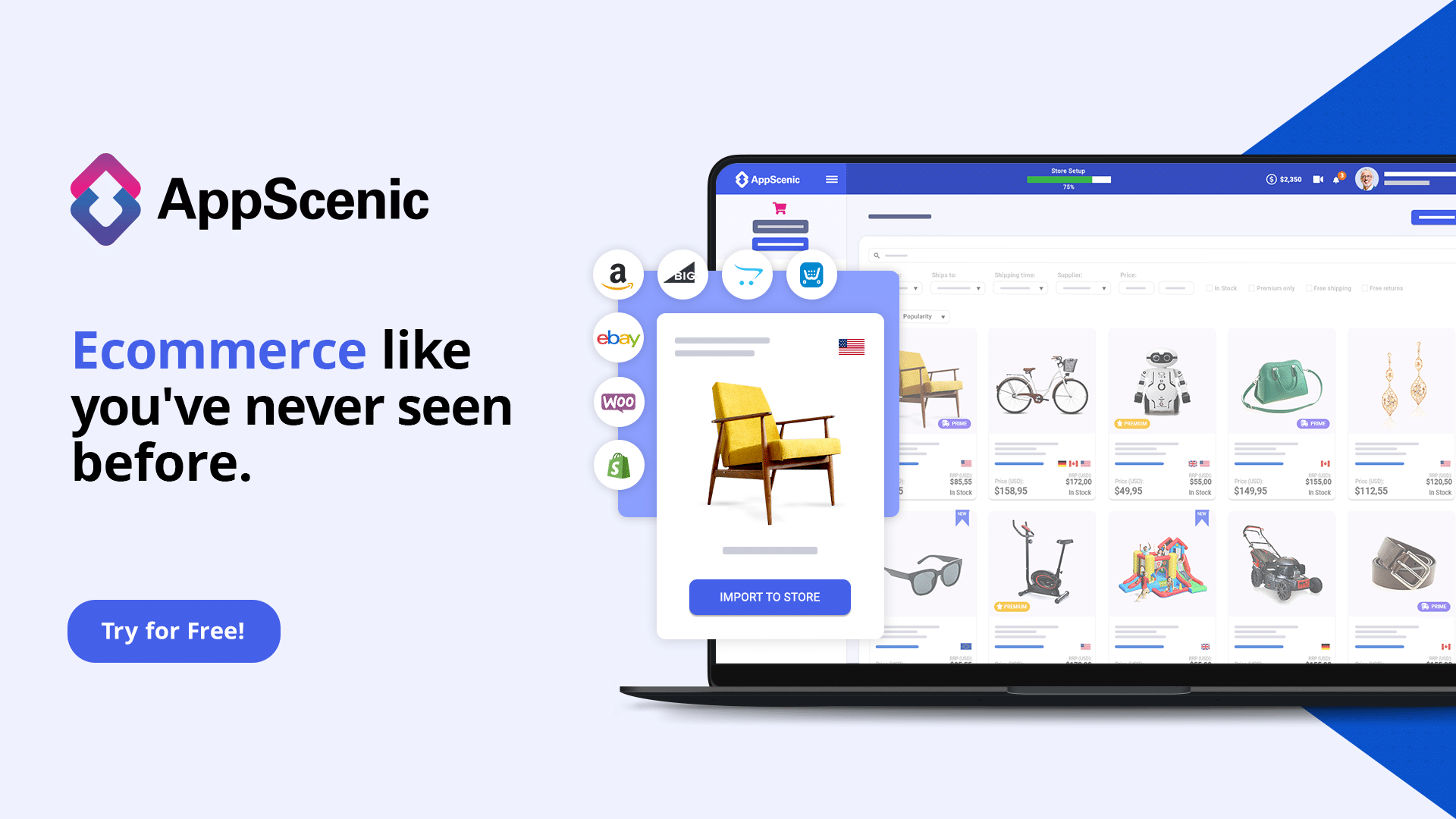 Appscenic
| 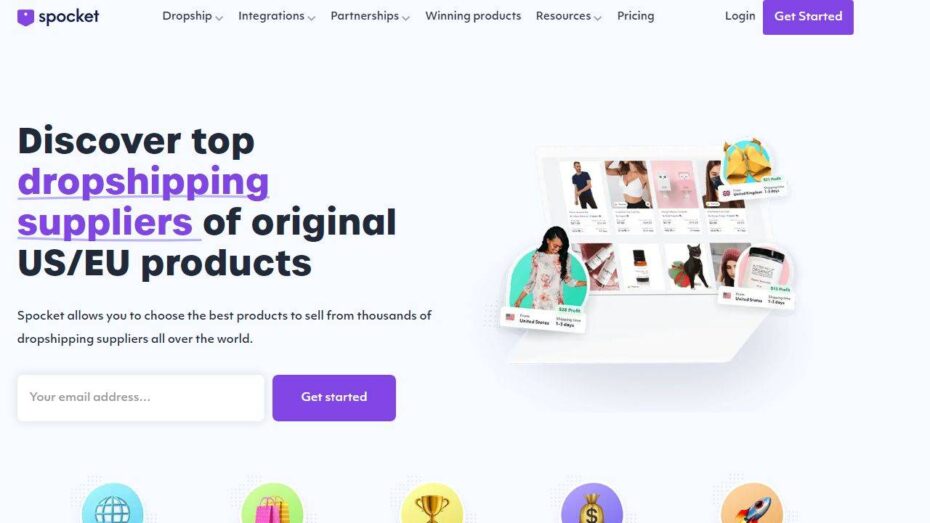 Spocket
|
Setting Up an Online Store
Setting up an online store begins with choosing the right e-commerce platform. I recommend you to consider popular options like Shopify, WooCommerce, or BigCommerce. These platforms offer various features and customization options to suit different needs and budgets.
I advise you to focus on creating a seamless and intuitive shopping experience. Ensure that your website is easy to navigate, with clear product categories and descriptions. High-quality images and detailed product information can help customers make informed purchasing decisions.
Additionally, I think integrating secure payment gateways is crucial for building trust. Offer multiple payment options, including credit cards, PayPal, and other secure methods. This flexibility can cater to a wider audience and increase conversion rates.
Lastly, I suggest you to implement efficient shipping and fulfillment processes. Provide clear information on shipping times and costs, and consider offering free shipping for larger orders. Streamlined logistics can enhance customer satisfaction and encourage repeat purchases.
Marketing Your Products Effectively
Marketing your products effectively is essential for driving traffic and sales. I recommend you to utilize various channels to reach your target audience. Social media platforms like Instagram, Facebook, and Pinterest are excellent for showcasing your products and engaging with potential customers.
I advise you to invest in search engine optimization (SEO) to improve your online store’s visibility. Use relevant keywords naturally in your product descriptions, titles, and meta tags. This strategy can increase your site’s ranking on search engines and attract organic traffic.
Additionally, I believe running targeted ad campaigns can boost your reach. Platforms like Google Ads and Facebook Ads allow you to create customized campaigns based on demographics, interests, and behaviors. These ads can drive highly relevant traffic to your store and increase conversions.
Finally, I suggest you to leverage email marketing to nurture customer relationships. Build an email list and send regular newsletters with product updates, special offers, and valuable content. Personalized email campaigns can keep your audience engaged and encourage repeat business.
Handling Orders and Customer Service
Handling orders and customer service efficiently is critical for a successful e-commerce business. I recommend you to set up an automated order processing system. Platforms like Shopify offer integrated solutions for managing orders, inventory, and shipping, reducing manual work and minimizing errors.
I advise you to prioritize excellent customer service. Respond promptly to inquiries and resolve any issues professionally. Providing a positive customer experience can lead to repeat purchases and positive reviews, which are invaluable for building your reputation.
Additionally, I think offering easy returns and exchanges can enhance customer satisfaction. Clearly outline your return policy on your website and make the process straightforward. This flexibility can reassure customers and encourage them to shop with confidence.
Lastly, I suggest you to gather and analyze customer feedback. Use surveys, reviews, and direct feedback to understand your customers’ needs and preferences. This information can help you improve your products and services, ensuring that you meet and exceed customer expectations.
6. Engage in Email Marketing for Direct Monetization
Engaging in email marketing for direct monetization is a powerful way to generate revenue from your website traffic. Email marketing allows you to build a direct line of communication with your audience, offering personalized content, promotions, and products. By nurturing your email list, you can turn subscribers into loyal customers and increase your earnings.
To maximize the benefits of email marketing, it’s essential to focus on building a quality email list and crafting effective email campaigns. Additionally, measuring the success of your email marketing efforts will help you refine your strategies and improve results over time.
Email Marketing Recommendations
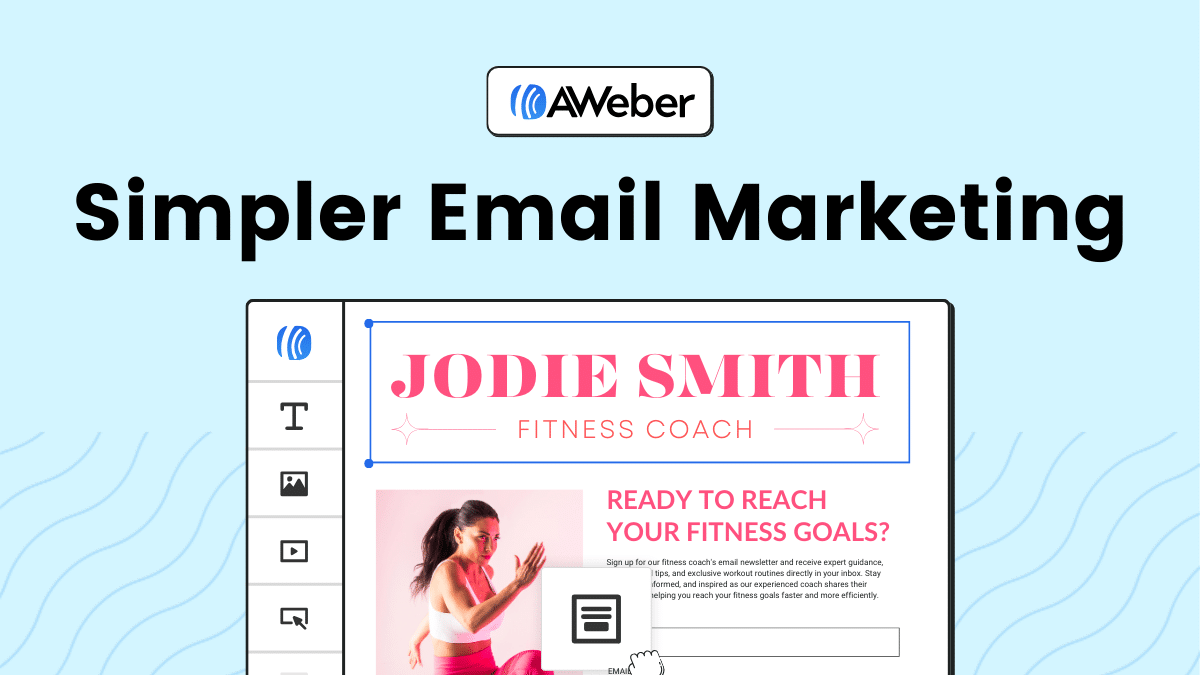 Aweber
| 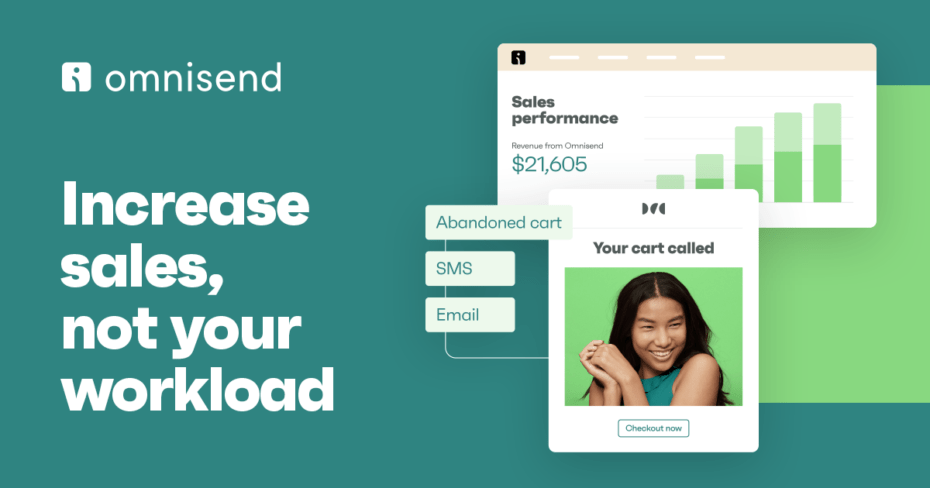 Omnisend
| 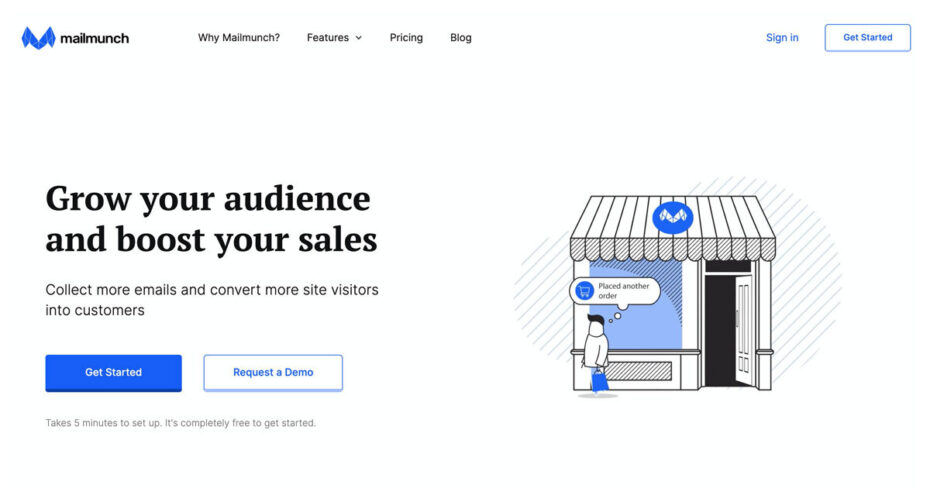 Mailmunch
|
Building a Quality Email List
Building a quality email list is the foundation of successful email marketing. I recommend you to use lead magnets to attract subscribers. Offer valuable resources such as e-books, guides, or exclusive discounts in exchange for email addresses. This strategy can entice visitors to join your list and engage with your content.
I advise you to place signup forms strategically throughout your website. Include forms in high-traffic areas like the homepage, blog posts, and landing pages. A well-designed and compelling call-to-action can significantly increase your signup rate. Ensure the process is simple and user-friendly to avoid deterring potential subscribers.
Additionally, I believe it’s crucial to segment your email list. Group subscribers based on their interests, behavior, or demographics. This allows you to send targeted and relevant content, increasing engagement and conversion rates. Segmentation helps you tailor your messages to different audience segments, making your campaigns more effective.
Lastly, I suggest you to maintain a clean email list. Regularly remove inactive subscribers and update outdated information. Keeping your list clean ensures that your emails reach the right people and improve your deliverability rates. Engaging with an active and interested audience is key to successful email marketing.
Crafting Effective Email Campaigns
Crafting effective email campaigns is essential for direct monetization. I recommend you to start with a clear goal for each campaign. Whether you’re promoting a product, sharing valuable content, or announcing a sale, having a defined objective will guide your email’s structure and messaging.
I advise you to focus on creating compelling subject lines. A captivating subject line can significantly increase your open rates. Use power words, personalization, and curiosity to grab your subscribers’ attention. Testing different subject lines can help you determine what resonates best with your audience.
Next, I think the content of your email should be engaging and valuable. Use a conversational tone to connect with your readers and include high-quality visuals to enhance your message. Keep the content concise and focused, providing clear calls-to-action that guide your readers toward the desired outcome.
Finally, I suggest you to optimize your emails for mobile devices. A significant portion of your audience will access emails on their phones, so ensure that your design is responsive and easy to navigate. Test your emails on different devices to guarantee a seamless experience for all subscribers.
Measuring Email Marketing Success
Measuring email marketing success is crucial for refining your strategies and achieving better results. I recommend you to track key metrics such as open rates, click-through rates, and conversion rates. These metrics provide insights into how your audience engages with your emails and help identify areas for improvement.
I advise you to use A/B testing to compare different elements of your emails. Test variations in subject lines, content, design, and calls-to-action to determine what works best. Analyzing the results will help you make data-driven decisions and optimize your campaigns for better performance.
Additionally, I believe it’s important to monitor your email deliverability rates. High deliverability ensures that your emails reach your subscribers’ inboxes. Regularly clean your email list and follow best practices to maintain a good sender reputation and avoid being marked as spam.
Lastly, I suggest you to gather feedback from your subscribers. Encourage them to share their preferences and opinions through surveys or direct replies. Understanding your audience’s needs and interests will help you tailor your content and improve your email marketing strategy.
7. Explore Membership and Community Models
Exploring membership and community models can provide a sustainable way to monetize your website traffic. Offering memberships allows you to create a sense of exclusivity and foster a loyal community. This approach not only generates recurring revenue but also enhances user engagement and satisfaction.
To implement this strategy effectively, focus on creating a member-exclusive community and offering valuable content and perks. Additionally, setting the right pricing and promoting memberships can drive growth and retention.
Creating a Member-Exclusive Community
Creating a member-exclusive community involves building a space where your audience feels valued and connected. I recommend you to use platforms like Discord, Slack, or private forums to host your community. These platforms offer various features to facilitate interaction and engagement among members.
I advise you to foster a welcoming and inclusive environment. Encourage members to introduce themselves, share their experiences, and participate in discussions. Active moderation and regular engagement from you can help maintain a positive atmosphere and encourage participation.
Next, I think offering regular events and activities can enhance the sense of community. Host webinars, Q&A sessions, or live chats to provide value and keep members engaged. These events offer opportunities for real-time interaction and can strengthen the bond within the community.
Lastly, I suggest you to recognize and reward active members. Highlighting contributions and offering incentives like badges or exclusive content can motivate members to stay involved and contribute more actively to the community.
Offering Members-Only Content and Perks
Offering members-only content and perks is essential for attracting and retaining subscribers. I recommend you to create high-quality, exclusive content that addresses the specific needs and interests of your members. This could include in-depth articles, video tutorials, or behind-the-scenes insights.
I advise you to provide additional perks that enhance the membership experience. Discounts on products or services, early access to new content, and personalized recommendations can add significant value to your membership offerings. These perks make members feel special and appreciated.
Additionally, I believe hosting exclusive events can be a powerful incentive. Members-only webinars, workshops, and meetups offer unique opportunities for learning and networking. These events can increase the perceived value of your membership and encourage more sign-ups.
Finally, I suggest you to regularly update and refresh your content and perks. Keeping your offerings dynamic and relevant ensures that members continue to find value in their subscription. Announce new content and perks frequently to maintain excitement and engagement.
Pricing and Promoting Memberships
Pricing and promoting memberships effectively is crucial for attracting and retaining subscribers. I recommend you to research your audience and competitors to set a competitive pricing strategy. Consider offering multiple tiers to cater to different budget levels and provide varying degrees of access and benefits.
I advise you to clearly communicate the value of your membership. Highlight the exclusive content, perks, and community benefits that members will receive. Use testimonials and case studies to showcase the positive experiences of existing members and build credibility.
Next, I think offering limited-time promotions can drive sign-ups. Discounts, free trials, or special offers create a sense of urgency and can encourage hesitant visitors to join. Promote these offers through your website, email campaigns, and social media channels.
Lastly, I suggest you to continuously monitor and refine your pricing strategy. Gather feedback from members and analyze data to understand what works best. Adjust your pricing and promotions as needed to maximize growth and retention.
8. Generate Revenue with Online Courses and Webinars
Generating revenue with online courses and webinars is a highly effective way to monetize your website traffic. This strategy allows you to share your expertise and provide valuable knowledge to your audience while earning income. Online courses and webinars can cater to a wide range of topics and skill levels, making them appealing to diverse audiences.
To succeed, it’s crucial to focus on developing high-quality course content, effectively marketing your online courses, and engaging your audience during webinars. These elements ensure that your offerings are not only educational but also captivating and profitable.
Developing High-Quality Course Content
Developing high-quality course content is essential for attracting and retaining students. I recommend you to start with thorough research on your chosen topic. Understand the needs and pain points of your target audience and tailor your content to address these. Providing solutions and actionable insights can make your course highly valuable.
I advise you to structure your course logically, breaking it down into manageable modules or lessons. Each section should build on the previous one, ensuring a smooth learning journey. Incorporate a mix of formats, such as videos, written materials, quizzes, and interactive elements, to cater to different learning styles and keep students engaged.
Next, I think investing in professional production quality can significantly enhance your course’s appeal. High-quality video and audio, clear visuals, and well-designed materials create a polished and professional learning experience. This attention to detail can set your course apart and justify a higher price point.
Finally, I suggest you to regularly update your course content. Keep it relevant with the latest information and trends in your field. Providing ongoing value through updates and additional resources can encourage students to return and recommend your course to others.
Marketing Your Online Courses
Marketing your online courses effectively is key to attracting students and generating revenue. I recommend you to start with a comprehensive marketing plan that outlines your goals, target audience, and promotional strategies. Identifying where your potential students spend their time online can help you tailor your marketing efforts.
I advise you to leverage your existing audience and email list. Announce your course launch through email campaigns, blog posts, and social media updates. Highlight the unique benefits and outcomes of your course to generate interest and excitement. Personal testimonials and success stories can add credibility and persuade potential students.
Additionally, I believe using paid advertising can expand your reach. Platforms like Google Ads, Facebook Ads, and LinkedIn Ads allow you to target specific demographics and interests. Creating compelling ad copy and visuals that highlight the value of your course can drive traffic and conversions.
Lastly, I suggest you to collaborate with influencers and industry experts. Partnerships can amplify your reach and build trust with their audiences. Offering affiliates or partners a commission for each student they refer can incentivize them to promote your course actively.
Engaging Your Audience During Webinars
Engaging your audience during webinars is crucial for delivering value and maintaining interest. I recommend you to start with a clear and engaging introduction. Outline what attendees can expect to learn and why it matters. Setting the stage effectively can capture their attention from the beginning.
I advise you to incorporate interactive elements throughout the webinar. Use polls, Q&A sessions, and live chats to encourage participation. This interaction keeps the audience engaged and allows you to address their specific questions and concerns. It also creates a more dynamic and engaging learning experience.
Next, I think varying your presentation style can maintain interest. Use a mix of slides, videos, demonstrations, and storytelling to keep the content lively and engaging. Changing the format periodically prevents monotony and helps illustrate key points more effectively.
Finally, I suggest you to follow up with attendees after the webinar. Send a thank-you email with a recap of the key points and additional resources. Encourage feedback to improve future webinars and maintain ongoing engagement. Offering a special discount or bonus for your online courses can also incentivize attendees to take the next step.


